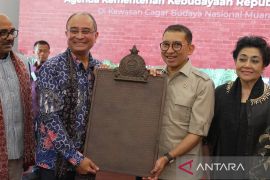"The old tax system, which is based on the progress of the smelters development, will likely be readopted," Suahasil Nazara, head of the fiscal policy affairs of the Finance Ministry, stated.
The finance ministrys official made the remarks during the launch of the Indonesia Economic Quarterly reports of the World Bank at the auditorium of the Center for Strategic and International Studies in Jakarta on Tuesday.
Nazara, however, chose not to divulge the amount of the new concentrate export tax tariff, saying that the old scheme was likely to continue.
"In the old regulation, the amount of exit fees for concentrate exports was fixed in accordance with the construction progress of the exporters smelters. It is likely that we will continue the scheme," Nazara noted.
The Ministry of Finance will discuss the tariff level with the Ministry of Energy and Mineral Resources through an assessment of the level and its influence on the development of the mineral purification process.
It will be adjusted to the efforts to increase the added value of metallic minerals through processing and purification of mineral metals for the realization of purification facilities in the country.
"The policy of export duty is not solely for government revenues but rather also for encouraging purification as much as possible," Nazara remarked.
Earlier, Energy and Mineral Resources Minister Ignatius Jonan had proposed a 10 percent export tax for concentrate exports to the Finance Ministry.
Government Regulation (PP) No. 1 of 2017 on the Fourth Amendment to PP No. 23 of 2010 on the Implementation of Mineral and Coal Mining has been issued.
With the revision, mining companies will still be allowed to export concentrates, but they have to change their business licenses from work of contract to a special mining license.
Currently, a five percent export tax is applicable on concentrate exports. The final decision of the proposals would be left entirely on the Ministry of Finance.
Jonan explained that the regulation was being amended to provide significant added value to the state revenue in the management of coal and minerals.(*)
Editor: Heru Purwanto
Copyright © ANTARA 2017











